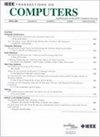LogSay: An Efficient Comprehension System for Log Numerical Reasoning
IF 3.6
2区 计算机科学
Q2 COMPUTER SCIENCE, HARDWARE & ARCHITECTURE
引用次数: 0
Abstract
With the growth of smart systems and applications, high volume logs are generated that record important data for system maintenance. System developers are usually required to analyze logs to track the status of the system or applications. Therefore, it is essential to find the answers in large-scale logs when they have some questions. In this work, we design a multi-stepLogSay:对数推理的高效理解系统
随着智能系统和应用程序的发展,产生了大量日志,这些日志记录了系统维护所需的重要数据。系统开发人员通常需要分析日志来跟踪系统或应用程序的状态。因此,当他们遇到一些问题时,必须从大规模日志中找到答案。在这项工作中,我们设计了一个多步骤的 "Retriever-Reader "问题解答系统,即 LogSay,旨在准确、高效地预测答案。我们的系统不仅能回答简单的问题,如段落日志或跨度,还能通过数字推理回答复杂的逻辑问题。LogSay 有两个关键组件:我们设计了五个运算符来实现它们。日志检索器旨在根据问题检索一些相关日志。然后,日志推理器进行数字推理,推断出最终答案。此外,由于缺乏可用的系统日志问题解答数据集,我们在三个公共日志数据集的基础上构建了问题解答数据集,并将公开这些数据集。我们的评估结果表明,LogSay 在准确性和效率方面都优于最先进的作品。
本文章由计算机程序翻译,如有差异,请以英文原文为准。
求助全文
约1分钟内获得全文
求助全文
来源期刊

IEEE Transactions on Computers
工程技术-工程:电子与电气
CiteScore
6.60
自引率
5.40%
发文量
199
审稿时长
6.0 months
期刊介绍:
The IEEE Transactions on Computers is a monthly publication with a wide distribution to researchers, developers, technical managers, and educators in the computer field. It publishes papers on research in areas of current interest to the readers. These areas include, but are not limited to, the following: a) computer organizations and architectures; b) operating systems, software systems, and communication protocols; c) real-time systems and embedded systems; d) digital devices, computer components, and interconnection networks; e) specification, design, prototyping, and testing methods and tools; f) performance, fault tolerance, reliability, security, and testability; g) case studies and experimental and theoretical evaluations; and h) new and important applications and trends.
 求助内容:
求助内容: 应助结果提醒方式:
应助结果提醒方式:


